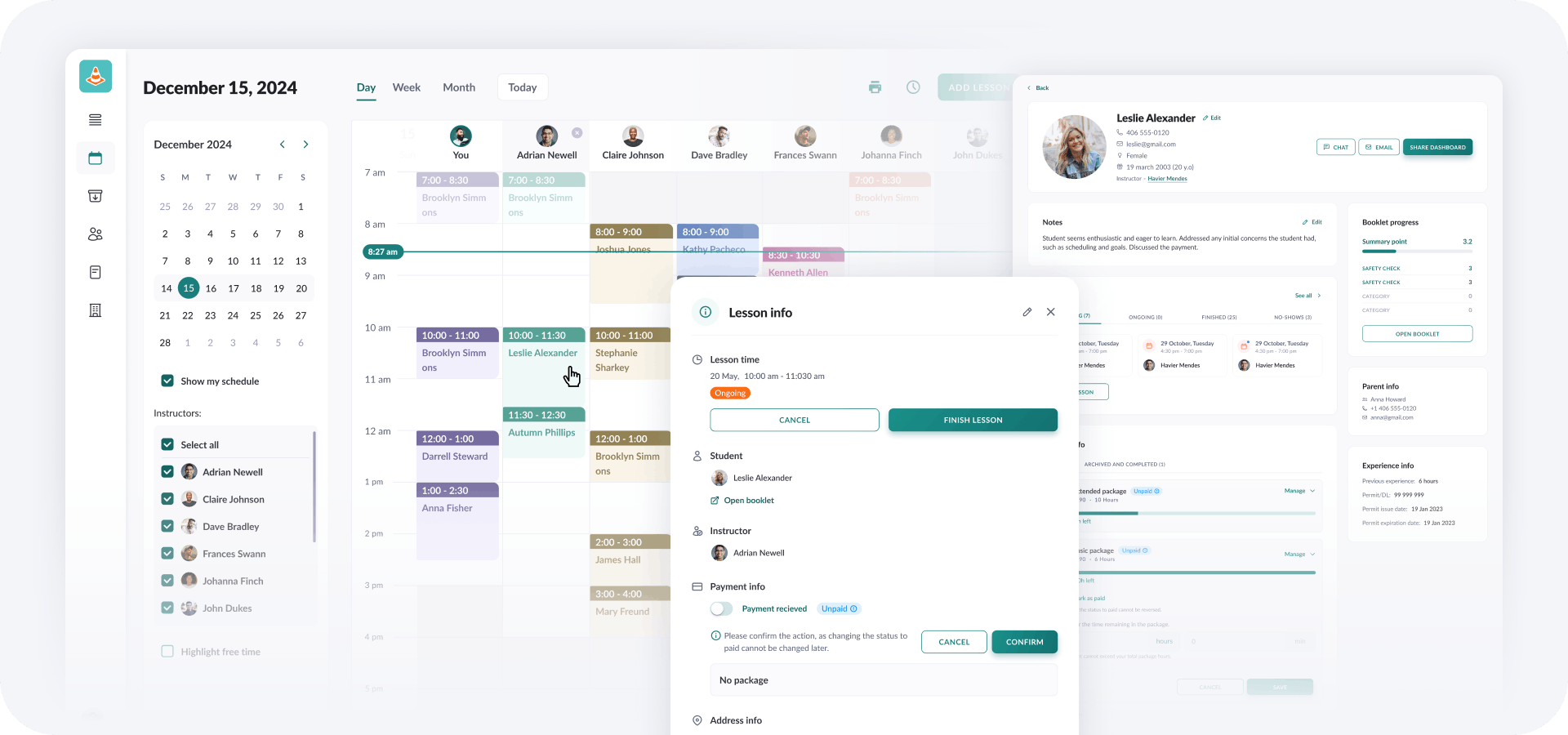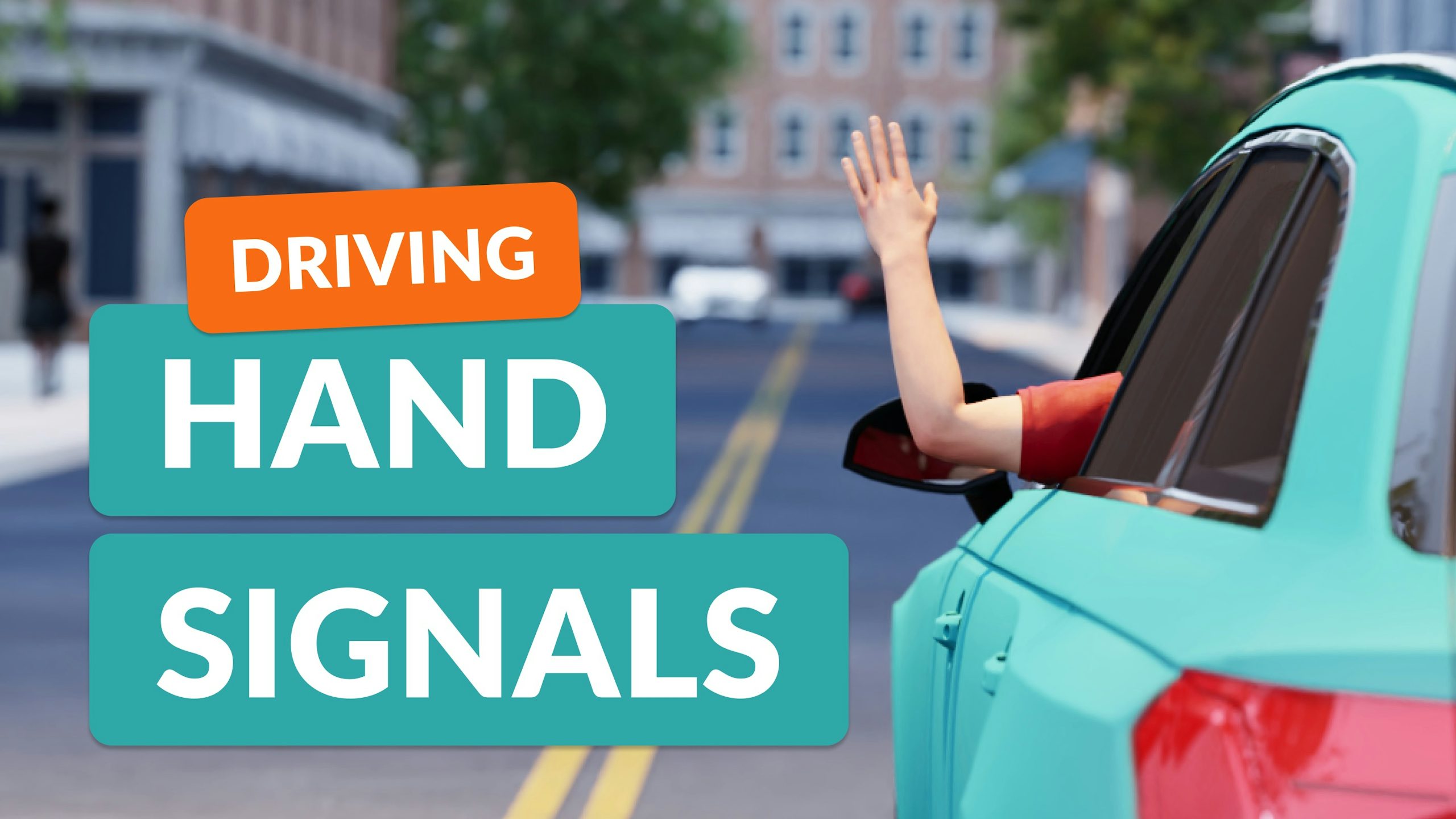
The Basic Driver Hand Signals Explained
Regardless of experience level, it’s crucial for all drivers to understand the basic hand signals. Even if you don’t intend to use them, you can be certain other road users will.
In this guide, we’ll go through the hand signals and their proper use.
What are the Hand Signals for Driving?
There are 3 basic hand signals:
- Slow down OR stop hand signal: extend your arm downwards with your palm facing backward.
- Left turn hand signal: hold your arm straight out of the window.
- Right turn hand signal: extend your arm upwards at a 90° angle.
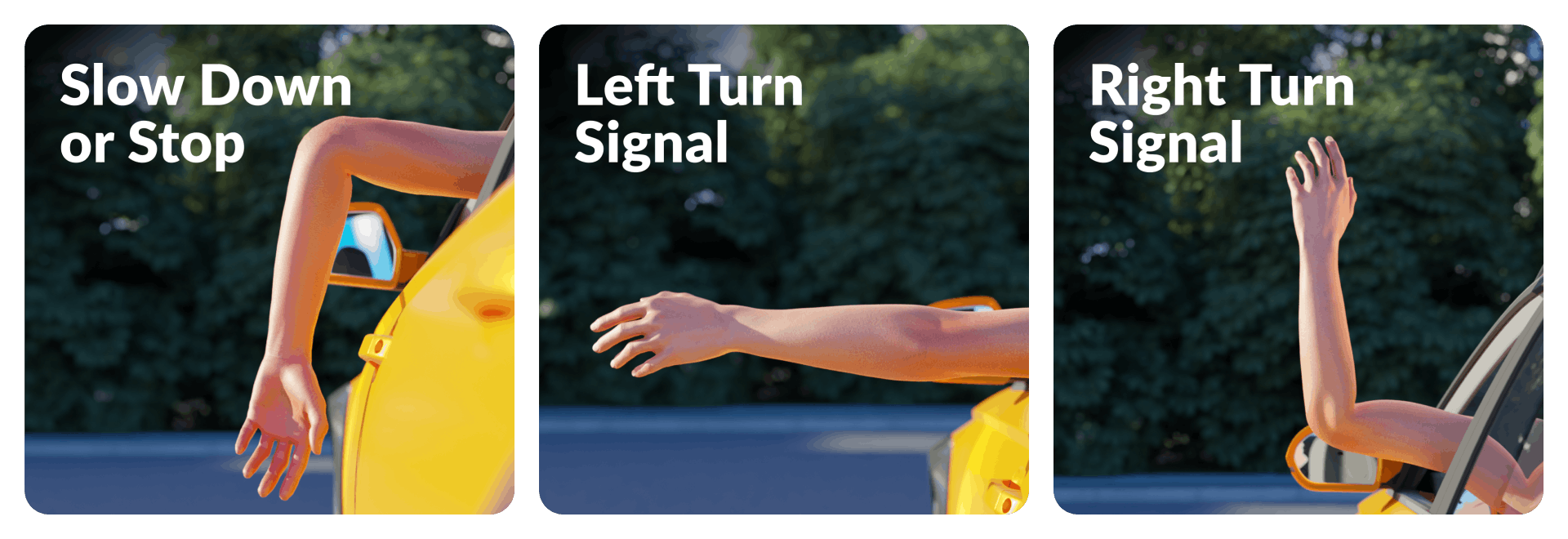
1. Slow Down or Stop Hand Signal
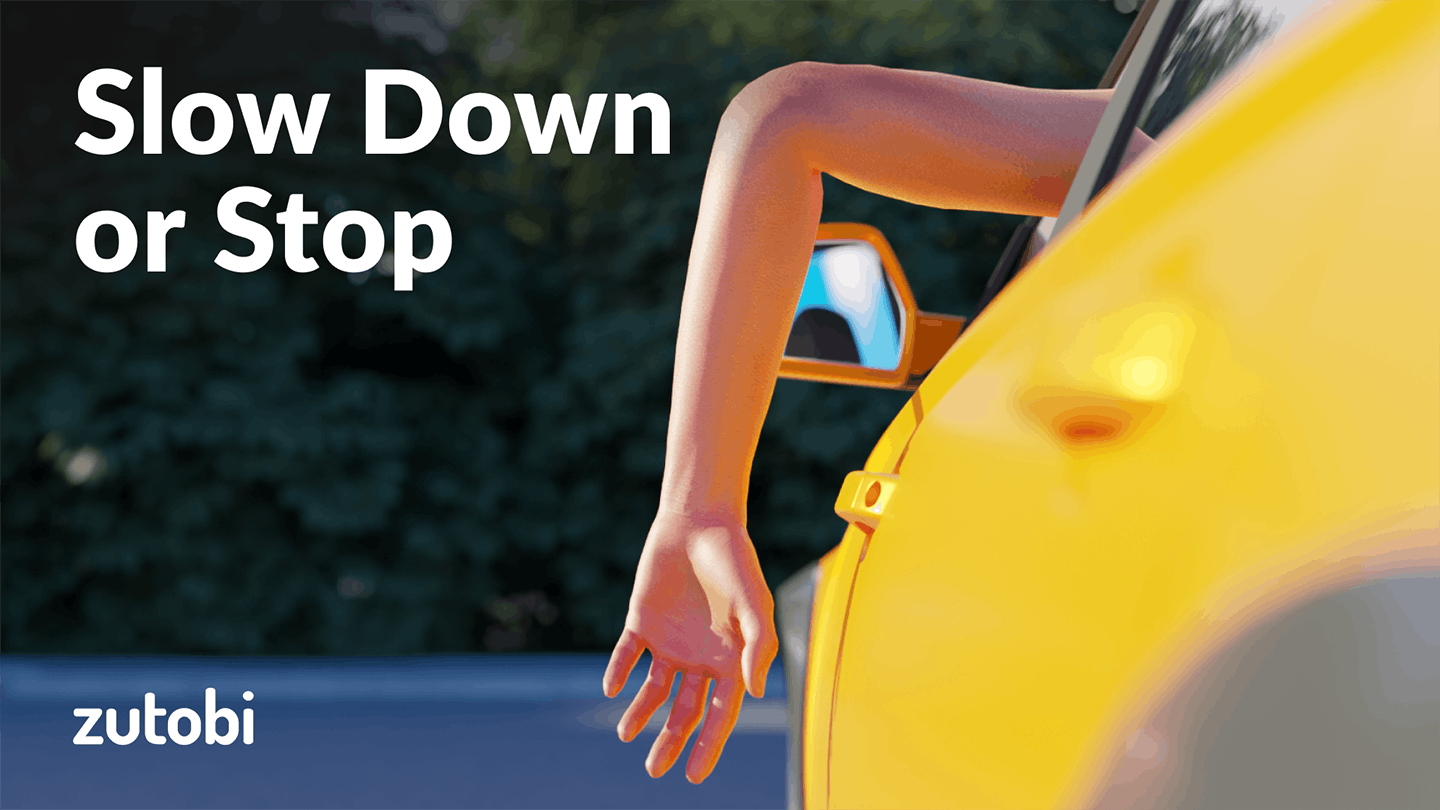
To show others on the road that you’re about to slow down or stop, reach your arm down with your palm facing backward. Make sure your arm is clearly visible to other drivers behind you. Keep your arm visible until you come to a full stop, and use your mirrors to ensure other drivers have seen and understood the signal.
2. Left Turn Hand Signal
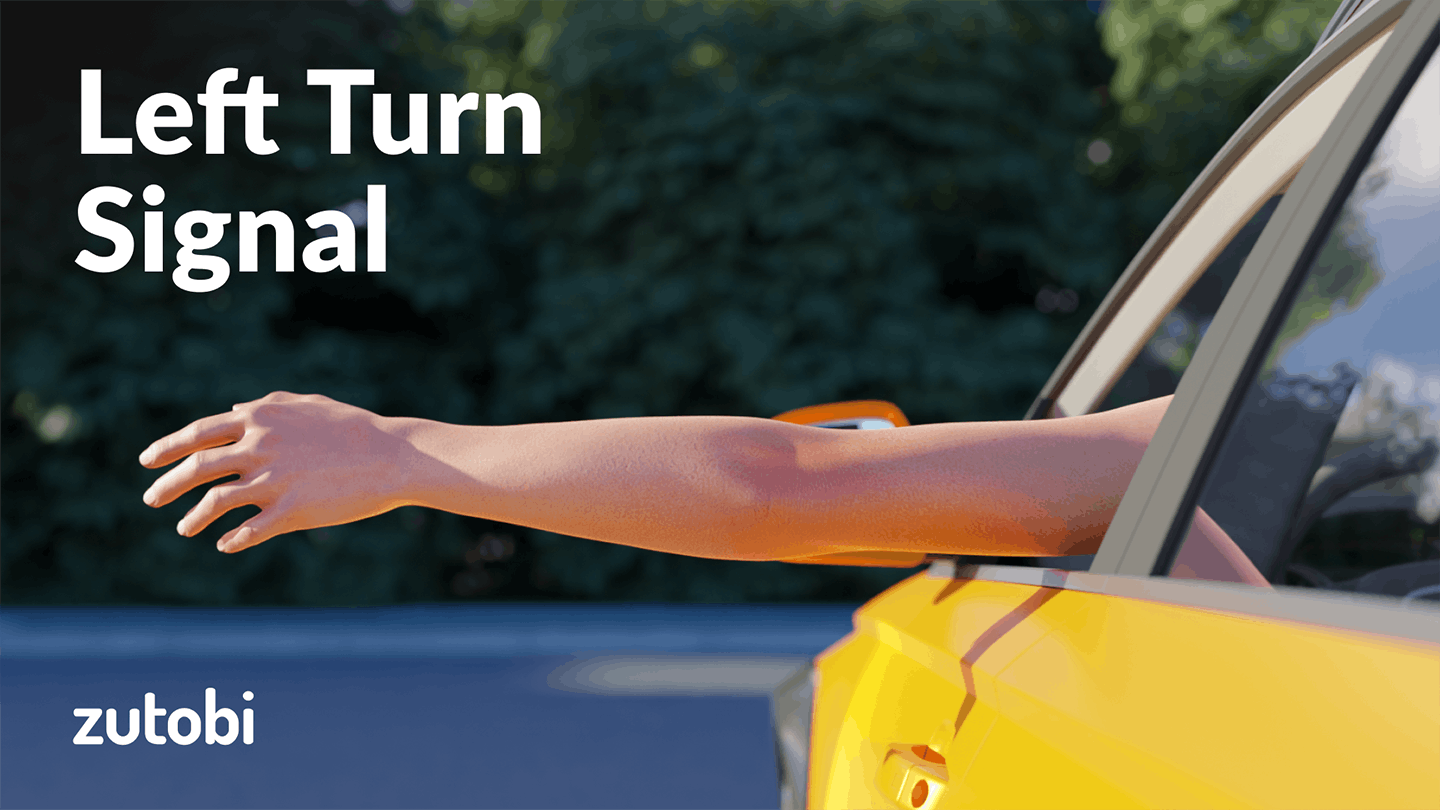
To show the left turn hand signal, hold your arm straight out through the window. Use it before changing lanes or turning to the left. Signal your intentions to turn for at least 100 feet and keep your arm visible until you begin your left turn.
3. Right Turn Hand Signal
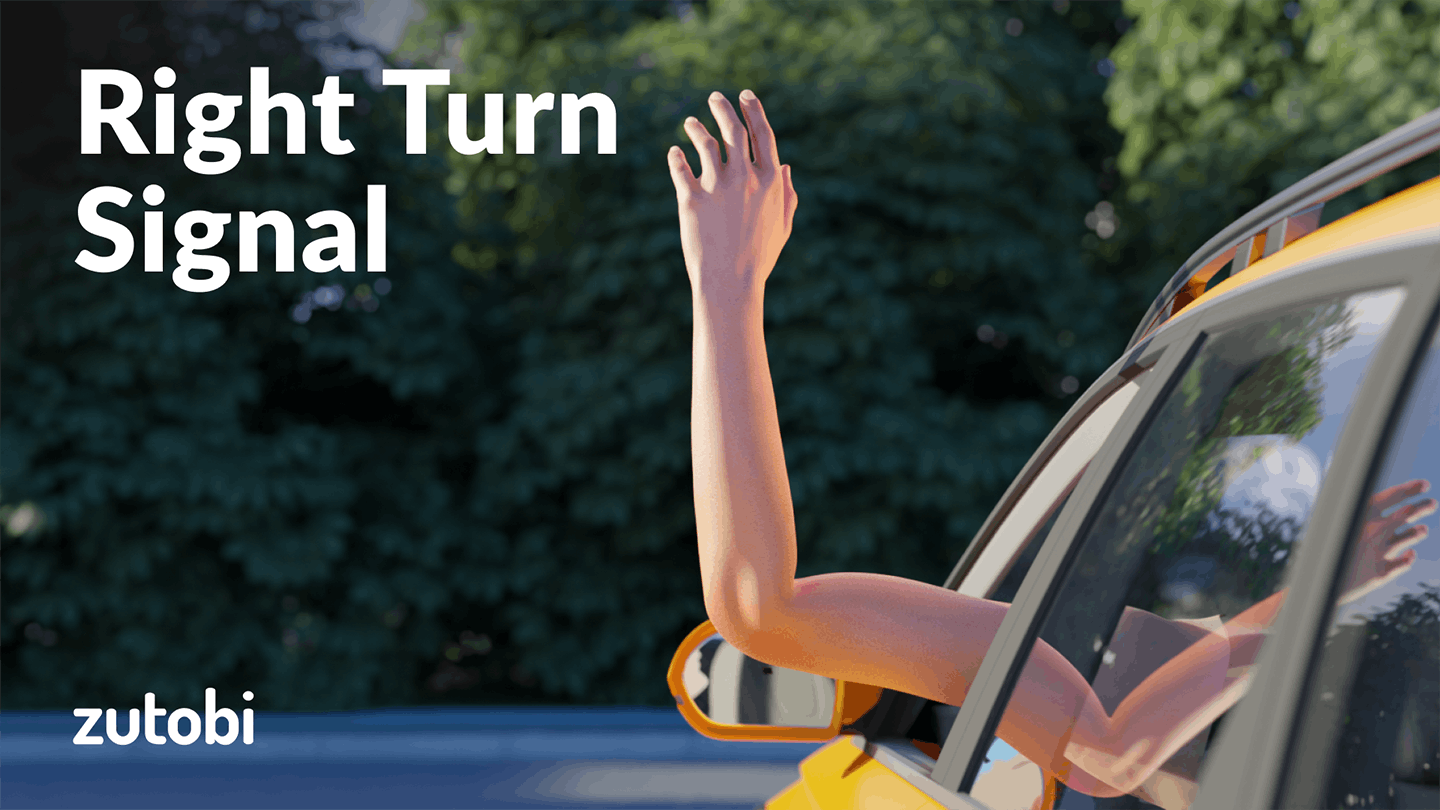
To indicate the right turn hand signal, you should extend your arm at a 90° angle upwards with your palm facing forward. Signal your intentions to turn for at least 100 feet and keep your arm visible until you begin your right turn.
Note: Be aware that vehicles already on your right side might not see the hand signal you make from your driver’s seat. Be very cautious of your surroundings before you begin the turn.
When Should You Use Hand Signals?
You must use hand signals when:
- You have malfunctioning turn indicators.
- Your signal lights are obscured by bright sunshine or other vehicles.
- There are any other situations when your vehicle’s signals are not visible or are not functioning.
Note that every U.S. state has a law that obliges drivers to signal their intention(s) to others. You should signal your intentions at least 100 feet before turning. The hand signals are the same in all the states.
Can You Replace Turn Signals With Hand Signals?
No, using hand signals is a temporary solution. Being a good driver means taking care of your vehicle. By doing so, you ensure advanced safety for yourself and others. Therefore, if your car lights are malfunctioning, don’t postpone fixing the problem.
Do You Need to Know the Hand Signals for the Driving Test?
Yes! Your examiner will ask you to show either one or all of the 3 basic hand signals on the driving test.

550+ exam-like questions
All you need to ace your test
Perfect for first-timers, renewals and senior citizens
Recommended articles
Ace your DMV test, guaranteed
Want to Be the Top School in Your Area?
- Simple & automated admin
- More time for teaching
- #1 learning materials for students

